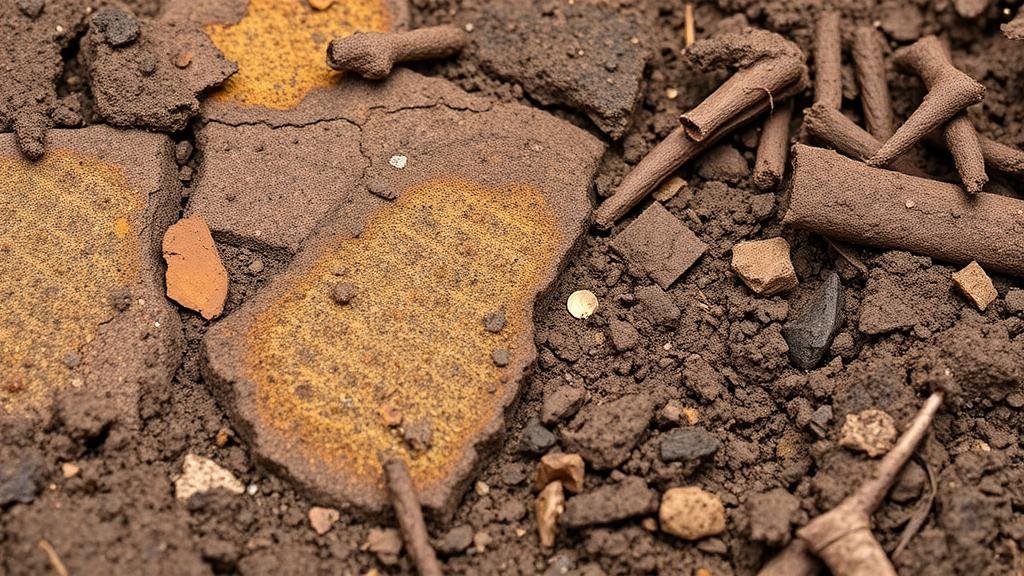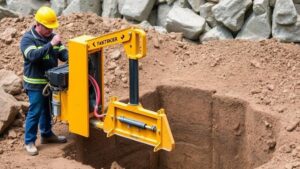Spotting Subtle Soil Discolorations That Indicate Nearby Precious Metals
Spotting Subtle Soil Discolorations That Indicate Nearby Precious Metals
Identifying signs of precious metals in the soil can be a hidden skill that offers immense reward. Subtle soil discolorations can reveal the presence of valuable minerals, thanks to the interaction between soil chemistry and geology. This article aims to provide an in-depth understanding of how soil discolorations may indicate the presence of precious metals such as gold, silver, and platinum.
Theoretical Background
The primary concept behind detecting precious metals via soil discoloration lies in the idea that these metals often alter the soil composition, leading to observable changes in color and texture. variations in soil color can be indicative of underlying mineralization, which may attract prospectors and geologists seeking valuable resources.
Common Discolorations and Their Meanings
Various soil discolorations can provide clues about precious metal deposits. Here are some common types of discoloration to look for:
- Iron Staining: Yellow to red hues can often indicate iron minerals which frequently accompany gold deposits. The transition from brown to reddish soil is a classic indicator of iron oxide presence.
- Green Soil: A greenish tint can suggest the presence of copper minerals, potentially signaling areas rich in precious metal deposits.
- Gray or Black Soil: Dark soil may contain organic materials or certain sulfides that can be associated with mineral deposits, including those of precious metals.
Field Case Studies
To better understand these discolorations, let’s examine two case studies where soil color played a key role in discovering precious metals.
One notable example occurred in the Yukon Territory of Canada during the Klondike Gold Rush. Prospectors noted a distinctive yellow staining at specific locations, which led to significant gold discoveries. Soil samples in this area displayed a rust-red color due to iron oxides, suggesting high mineral activity nearby.
Another case is the Merced Gold Mining district in California, where variations in soil color were instrumental in identifying gold deposits. Researchers found that areas with blackened soils often aligned with previously mined sites, where gold left behind was treated chemically, thus altering the surrounding environment.
Tools for Soil Analysis
To accurately assess soil discolorations, several tools and technologies can aid in the investigation:
- Soil Test Kits: These kits can analyze pH levels, nutrient content, and metal concentration, providing immediate feedback about potential mineralization.
- Geochemical Analysis: Advanced lab techniques can reveal trace elements that might indicate the presence of precious metals.
- Remote Sensing Technology: Satellite and aerial imaging can help identify large-scale discolorations that may hint at metal deposits beneath the Earths surface.
Potential Questions and Concerns
It is important to address some common inquiries regarding soil discoloration and precious metals:
- Are all discolored soils indicative of precious metals? No, not every discoloration signals the presence of valuable resources. Soil chemistry is complex; thus, it is essential to conduct further testing to confirm findings.
- Is it legal to extract minerals based on soil color indications? Legality depends on local laws and regulations concerning mineral rights and land ownership. Always consult with authorities before conducting any mining activities.
Actionable Takeaways
Understanding soil discolorations can be pivotal for those interested in locating precious metals. By observing the following:
- Look for specific color changes in the soil such as yellow, green, or dark hues.
- Use soil test kits and advanced analysis techniques to confirm the presence of potential metals.
- Always remain compliant with local laws regarding mineral extraction.
To wrap up, while the detection of precious metals through subtle soil discolorations is not an exact science, it serves as a meaningful starting point for exploration. With the right tools and knowledge, both amateur and professional prospectors can better navigate and assess their environments, potentially leading to fruitful discoveries.



